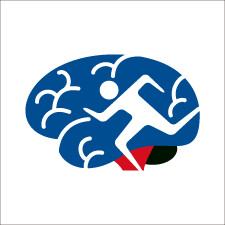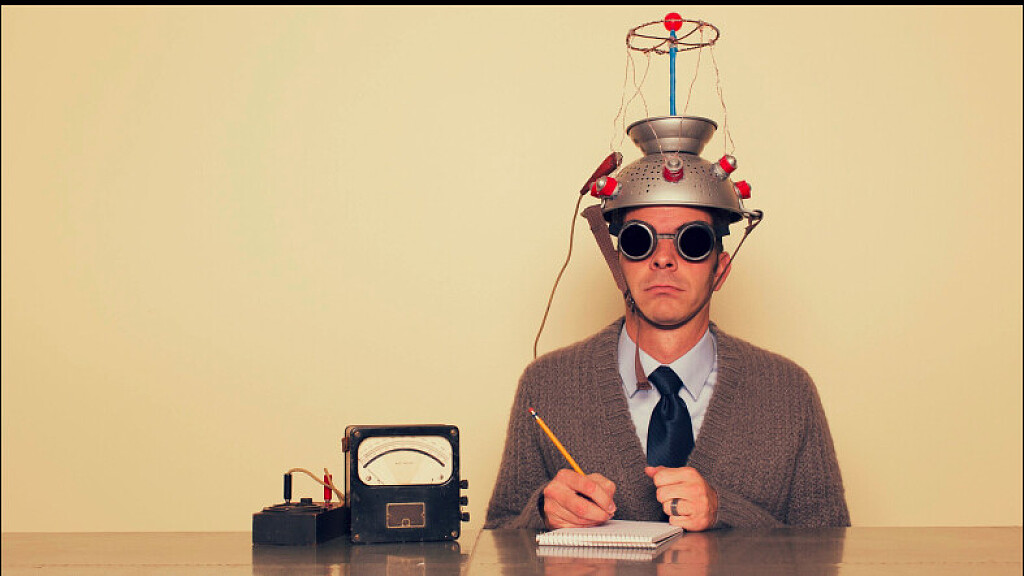Running News Daily
Running News Daily is edited by Bob Anderson. Send your news items to bob@mybestruns.com Advertising opportunities available. Train the Kenyan Way at KATA Kenya and Portugal owned and operated by Bob Anderson. Be sure to catch our movie A Long Run the movie KATA Running Camps and KATA Potato Farms - 31 now open in Kenya! https://kata.ke/
Index to Daily Posts · Sign Up For Updates · Run The World Feed
What the New Grand Theory of Brain Science Can Teach Athletes
“Predictive processing” offers novel ways to think about sports psychology, the limits of endurance, and the urge to explore.
If you read popular science books about the brain, you might have encountered a new “grand theory” called predictive processing. If you haven’t yet, you will. Over the last two decades, it has gone from obscure idea to increasingly dominant paradigm. And it’s such a broad and all-encompassing theory that it seemingly has something to say about everything: how the brain works, why it’s structured the way it is, what that means for how we perceive the world—but also horror movies, mental health, cancer cells, and perhaps even endurance sports and adventure.

I’ve been trying to get my head around predictive processing for five or six years now. It can get complicated if you dig into the mathematical details. But I recently read a book called The Experience Machine: How Our Minds Predict and Shape Reality that does a good job of conveying the theory’s essence in an accessible way. It came out last year and is by Andy Clark, a cognitive philosopher at the University of Sussex who is one of the theory’s leading proponents. The book got me thinking about how predictive processing applies to some of the areas of science that I’m most interested in.
Here, then, is a very rough guide to predictive processing—still a speculative and unproven theory at this point, but an intriguing one—from the Sweat Science perspective.
Normally, we assume that you see the world as it is. Light bounces off the objects around you and into your eyes; the receptors in your eyes send signals to your brain; your brain makes sense of those incoming signals and concludes that, say, there’s a snake on the path. Predictive processing flips the script. Your brain starts by making a prediction of what it expects to see; it sends that prediction out toward your eyes, where the predictions are compared with incoming signals. If there’s any discrepancy between the outgoing predictions and the incoming signals, you update your predictions. Maybe it turns out that it’s a stick on the path, even though at first glance you could have sworn it was a snake.
This is actually a very old idea. It’s often attributed, in a basic form, to Hermann von Helmholtz, a nineteenth-century German scientist. Modern neuroscience pushes the idea farther and offers some clues that it’s true: for example, there are more neural connections leading from the brain to sensory organs like the eyes than there are carrying information from the senses back to the brain. Those outgoing signals are presumably carrying the brain’s predictions to the senses. What we see (and hear and smell and so on), in this picture, is basically a controlled hallucination that is periodically fact-checked by the senses.
What I find particularly intriguing about predictive processing is that there’s a deeper mathematical layer. A British scientist named Karl Friston, who pioneered several brain imaging techniques in the 1990s and is by several measures the most-cited neuroscientist ever, has proposed an idea called the free energy principle. All life, Friston argues, has an essential drive to minimize surprise—which is related to a mathematical quantity, borrowed from physics, called free energy—in order to ensure its continued survival. The resulting equations are beautiful but famously inscrutable. If you’re interested, the best introduction I’ve found is in a free e-book published in 2022 by Friston and two colleagues called Active Inference: The Free Energy Principle in Mind, Brain, and Behavior. The important point, though, is that these equations lead to the qualitative picture I described above, of the brain as a prediction machine.
In The Experience Machine, Clark lays out some examples of why this idea matters. Mental health conditions like depression and anxiety may relate to glitches in how the brain updates its predictions; the aesthetic chills you get from great art or horror movies may signal that we’ve encountered “critical new information that resolves important uncertainties”—a physiological “aha” moment. But what does all this tell us about endurance?
The athlete-related topic that Clark addresses most directly in his book is sports psychology. For example, he has a section on the power of self-affirmation, in which the positive words you say to yourself alter your brain’s predictions, which in turns alters your actions in performance-boosting ways. I’ve written a bunch of times about the effects of motivational self-talk on endurance. I’m fascinated by the evidence that it works, but struggle to reconcile it with my mechanistic understanding of how the body works. Predictive processing offers a new way of understanding the science of self-talk.
The key point is that our brains aren’t just predicting the present; they’re also simulating the future, to minimize unexpected surprises. If we expect to feel pain, fatigue, doubt, or even hunger, those predictions become self-fulfilling prophecies—just as, if you’re wandering through the rainforest, you’re more likely to mistake a stick for a snake than if you’re walking down Fifth Avenue. I remember, a decade ago, puzzling over the results of a study that fed people milkshakes and found that their appetite hormones responded differently depending on whether they were told it was an “indulgent” shake or a “sensible” one. How could appetite hormones respond to words? Through the predictions sent from the brain to the gut.
Clark has a long discussion of placebos, but the most unexpected suggestion he makes is a way of improving sports performance “in a rather sneaky manner.” One of the interesting facts about placebos is that the response can be trained. If you give a real, clinically effective drug to someone repeatedly, their brain will eventually begin predicting the response more and more strongly. During the Second World War, nurses who were running short of morphine sometimes injected saline instead; it turns out that, if the patients had been receiving morphine regularly, their bodies (and brains) responded to the saline injection in a similar way.
Clark proposes training an athlete with a drug that is banned in competition (like stimulants), then giving them a placebo version when they actually race. In theory, this should generate a stronger placebo response than you’d normally get. For the record, I don’t think this is consistent with what the World Anti-Doping Agency calls “the spirit of sport,” but it’s an interesting thought experiment.
What first sparked my interest in predictive processing was an email from a reader after my book Endure came out in 2018. I’d written about how our expectations of how a race will feel at any given point affects how hard we feel we’re able to push, based on theories from Ross Tucker and other researchers. Predictive processing, the emailer suggested, might have something to say on the topic.
I think that’s true. As you gain experience, you develop a pretty good idea of what you’ll feel like halfway through a 5K. If you feel better or worse than expected, that generates a prediction error. There are two ways of fixing prediction errors. One is to update your beliefs: I thought this pace would feel medium-hard at this point in the race, but it feels hard, so I’ll adjust my internal prediction. The other is to adjust your actions: I thought this pace would feel medium-hard, so I’ll slow down until it feels medium-hard. The second strategy is what Friston calls active inference.
Why is it that we generally adjust our pace rather than our beliefs when we’re racing? I’m not sure, but I wonder whether predictive processing will suggest some new ways of probing this longstanding question.
There’s a puzzle in predictive processing called the Dark Room problem. If the free energy principle demands that we minimize surprise, why don’t we just lock ourselves in a dark room until we starve to death? One way of answering this question is to recall that we’re not just trying to minimize present surprise; we’re also trying to minimize surprise in the future. And the best way of avoiding future surprises is to learn as much as possible about the world and how it works.
Predictive processing, in other words, wires us to seek out the unknown in order to learn about it, as a way of minimizing future surprise. This is a different way of thinking about why we like venturing into the wilderness, undertaking challenges like running a marathon, and traveling to unfamiliar places. This is an idea I’m digging deeper into for a forthcoming book on the science of exploring.
Does expressing these ideas in the language of predictive processing actually change anything? That remains to be seen. I’ve talked to some scientists over the past few years who view it as genuinely new, and others who view it more as new words for familiar ideas.
The most practical suggestion that I’ve seen comes from an Israeli scientist named Moshe Bar, who wrote a book called Mindwandering in 2022. Bar’s big idea is that we have what he calls “overarching states of mind” that reflect the degree to which we’re focusing on the “top-down” predictions generated by our brains versus the “bottom-up” observations from our senses.
When we put more weight on predictions, we become more narrowly focused on a given task; when we put more weight on sensory data, we have broader attention, are more inclined to explore, and have a more positive mood. By “zooming out”—thinking about the big picture or the future, talking to ourselves in second person—we can shift the dial toward sensory input and loosen the grip that our predictions sometimes exert on us.
Admittedly, all of this sounds a bit esoteric. But the more I read about predictive processing, and the more I talk to scientists who are developing these ideas, the more I’m convinced that there’s something interesting here. Exactly where all this will lead—well, that’s hard to predict.
by Outside Online
Login to leave a comment




